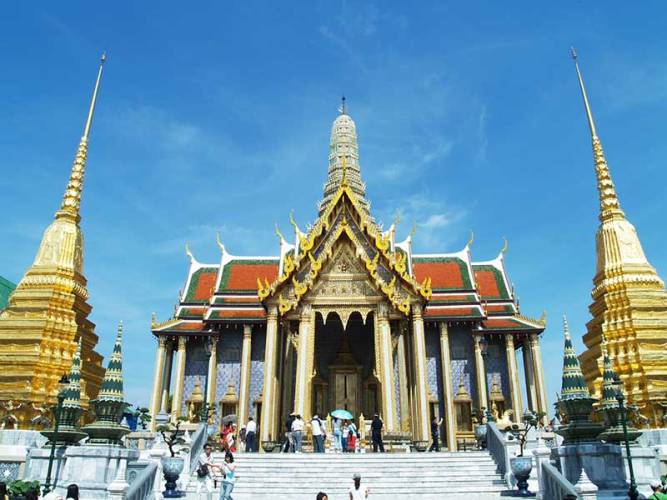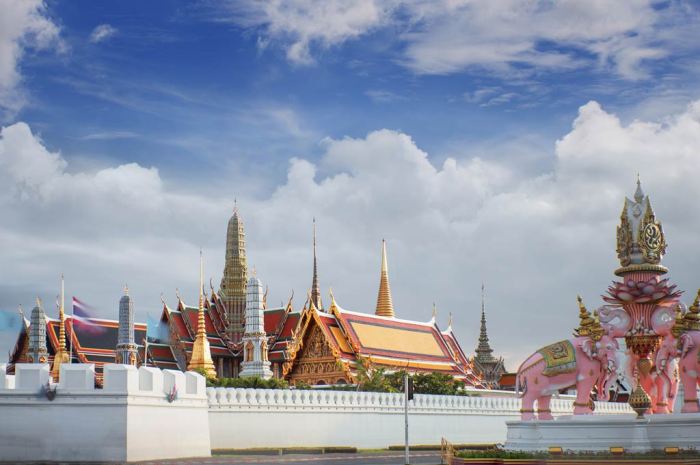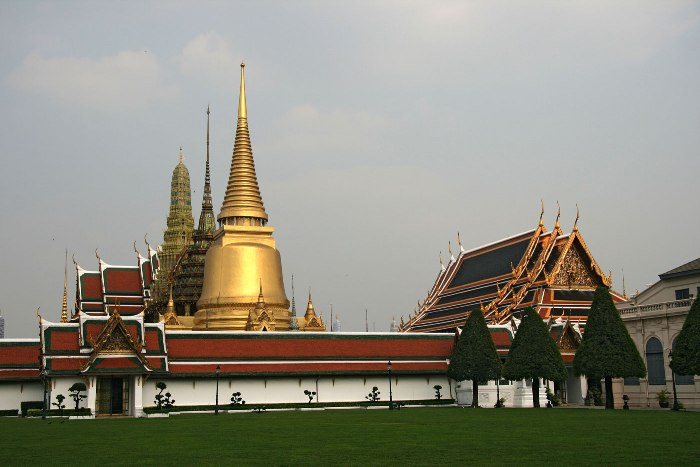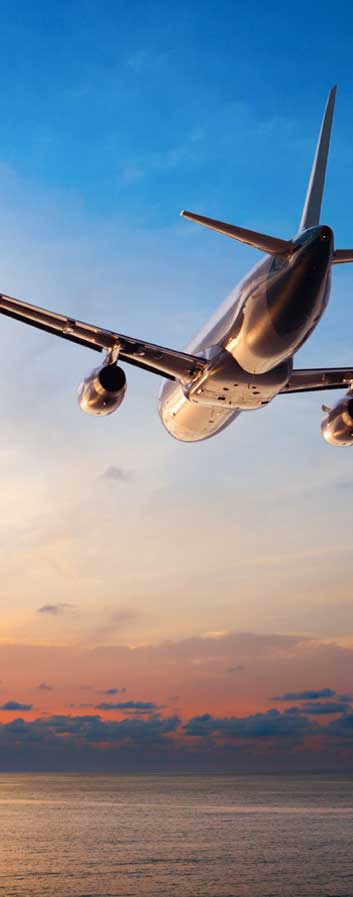Grand Palace
If there is one must-see sight that no visit to Bangkok would be complete without, it's the dazzling, spectacular Grand Palace, undoubtedly the city's most famous landmark. Built in 1782 - and for 150 years the home of the Thai King, the Royal court and the administrative seat of government - the Grand Palace of Bangkok is a grand old dame indeed, that continues to have visitors in awe with its beautiful architecture and intricate detail, all of which is a proud salute to the creativity and craftsmanship of Thai people. Within its walls were also the Thai war ministry, state departments, and even the mint. Today, the complex remains the spiritual heart of the Thai Kingdom.
Within the palace complex are several impressive buildings including Wat Phra Kaew (Temple of the Emerald Buddha), which contains the small, very famous and greatly revered Emerald Buddha that dates back to the 14th century.
The robes on the Buddha are changed with the seasons by HM The King of Thailand, and forms an important ritual in the Buddhist calendar. Thai Kings stopped living in the palace around the turn of the twentieth century, but the palace complex is still used to mark all kinds of other ceremonial and auspicious happenings.

The palace complex, like the rest of Ratanakosin Island, is laid very similar to the palaces of Ayutthaya, the glorious former capital of Siam which was raided by the Burmese. The Outer Court, near the entrance, used to house government departments in which the King was directly involved, such as civil administration, the army and the treasury. The Temple of the Emerald Buddha is located in one corner of this outer court. The Central Court is where the residence of the King and halls used for conducting state business were located. Only two of the throne halls are open to the public, but you'll be able to marvel at the exquisite detail on the facades of these impressive structures.
The Inner Court is where the King's royal consorts and daughters lived. The Inner Court was like a small city entirely populated by women and boys under the age of puberty. Even though no royalty currently reside in the inner court, it is still completely closed off to the public. Despite the proximity of the Grand Palace and Wat Phra Kaew, there's a distinct contrast in style between the very Thai Temple of the Emerald Buddha and the more European inspired design of the Grand Palace (the roof being the main exception). Other highlights are Boromabiman Hall and Amarinda Hall, the original residence of King Rama I and the Hall of Justice.

Nowadays its impressive interior is used for important ceremonial occasions like coronations. It also contains the antique throne, used before the Western style one presently in use. Visitors are allowed inside the spacious European style reception room or Grand Palace Hall (Chakri Maha Prasat). Then there's the impressive Dusit Hall, rated as perhaps the finest architectural building in this style, and a museum that has information on the restoration of the Grand Palace, scale models and numerous Buddha images.
Important Note about the Grand Palace
A strict dress code applies. The Grand Palace with The Temple of the Emerald Buddha is Thailand's most sacred site. Visitors must be properly dressed before being allowed entry to the temple. Men must wear long pants and shirts with sleeves (no tank tops. If you're wearing sandals or flip-flops you must wear socks (in other words, no bare feet.) Women must be similarly modestly dressed. No see-through clothes, bare shoulders, etc. If you show up at the front gate improperly dressed, there is a booth near the entrance that can provide clothes to cover you up properly (a deposit is required).

Wat Phra Kaew or the Temple of the Emerald Buddha (officially known as Wat Phra Sri Rattana Satsadaram) is regarded as the most important Buddhist temple in Thailand. Located in the historic centre of Bangkok, within the grounds of the Grand Palace, it enshrines Phra Kaew Morakot (the Emerald Buddha), the highly revered Buddha image meticulously carved from a single block of jade. The Emerald Buddha (Phra Putta Maha Mani Ratana Patimakorn) is a Buddha image in the meditating position in the style of the Lanna school of the north, dating from the 15th century AD.



































